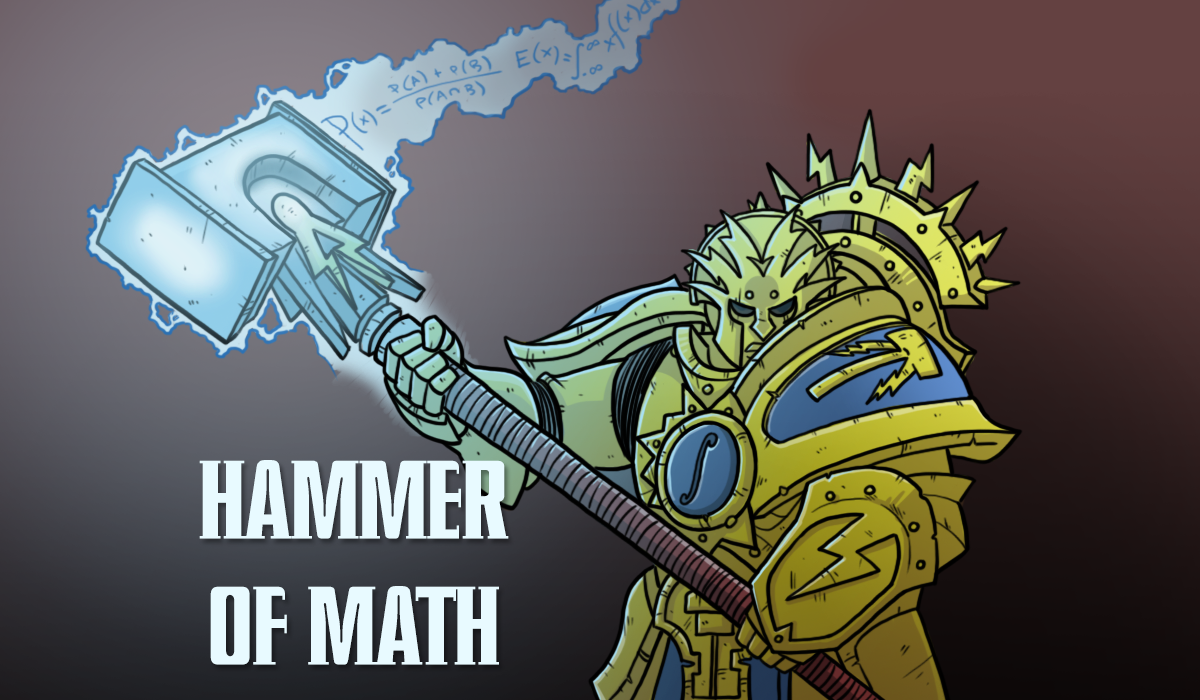This week’s Hammer of Math steps into the Mortal Realms to compare the effects of the different weapons for Hearthguard Berzerkers.
Okay, I’ll admit it’s been awhile since I last did a Hammer of Math on Age of Sigmar. I apologize for that, as it looks like a really fun game and to be honest 40k seems to be getting a little off the walls lately. Fortunately fellow Goonhammer author Bair had a very cool request for me and I was happy to find the answer to a question he has apparently been asked quite a few times. That question is this: When it comes to Fyreslayer Hearthguard Berzerkers is it better to go with the giant axe or the giant axe with a flaming flail attached to it?
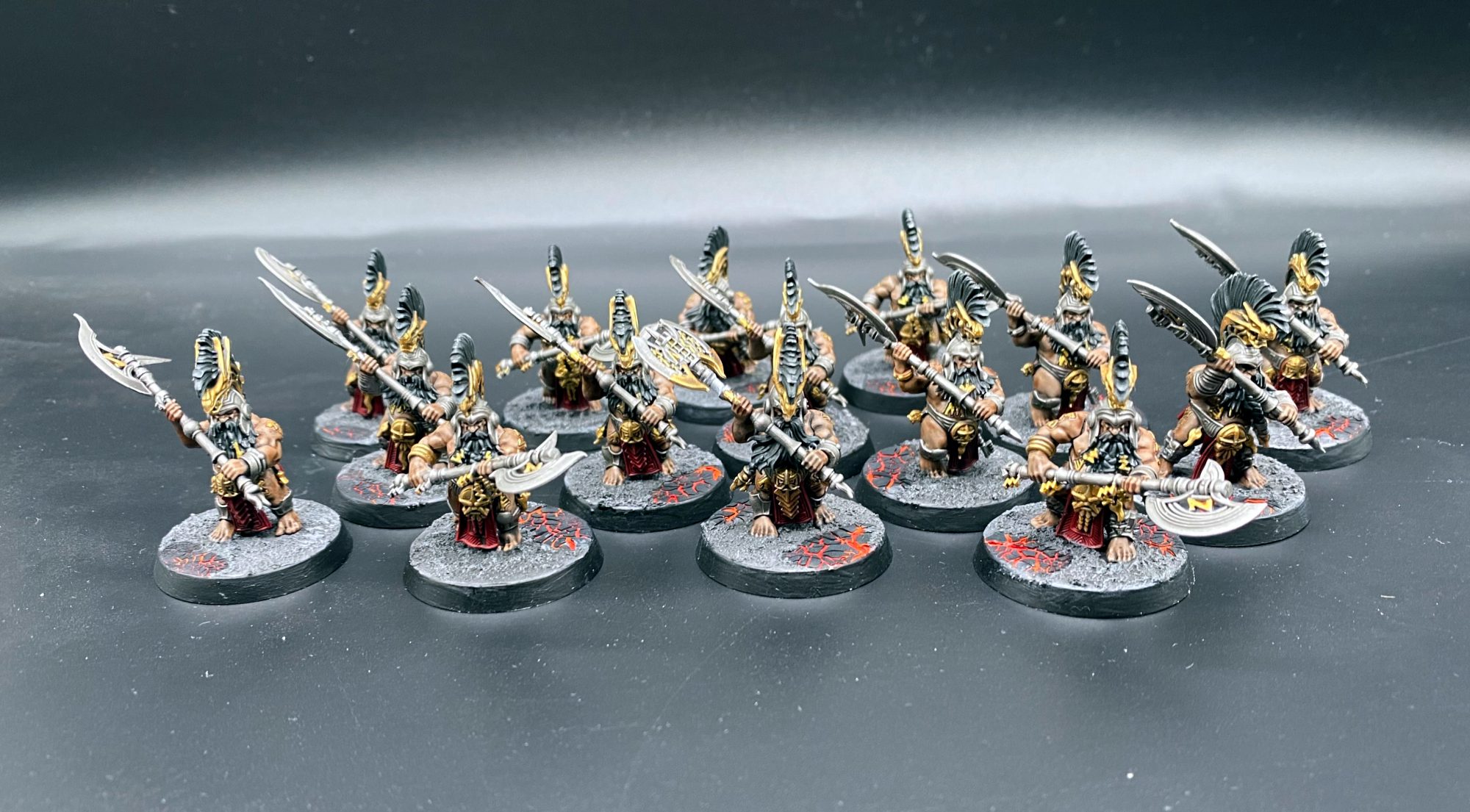
From an aesthetic standpoint the answer is obvious, but surprisingly enough there are rules involved and it’s important to consider them. AOS uses a straightforward attack sequence in which the attacking player rolls to hit and wound, and if the opponent then fails a save a fixed amount of damage is applied to the unit. Damage spills between models so if an attack deals 2 points of damage to a unit with single wound models then two models will be removed. There are also mortal wounds which will bypass the save roll when inflicted. In the case of the Hearthguard Berzerkers there are two weapons to consider.
- The Berzerker Broadaxe is a big choppy axe which hits on a 3+, wounds on a 3+, has a -1 Rend value and inflicts 2 damage.
- The Flamestrike Poleaxe is a slightly less choppy axe with a flaming flail which hits on a 3+, wounds on a 3+, has no Rend value, and inflicts 1 damage. On an unmodified hit roll of 6 the attack inflicts 2 mortal wounds in addition to any normal damage.
Because AOS weapons use fixed hit and wound values the primary source of variation is on the save of the target. This can range from a 2+ to no save at all depending on the target and varying circumstances. What this means is that we can get a pretty good idea of how a weapon will perform by looking at the probability that any damage will be inflicted, and the average amount of damage each attack will deal based on that probability. The fact that the poleaxe can inflict a range of damage makes it difficult to get a complete understanding of the output from a simple probability and average. The best solution is to get an understanding of the range of possible outcomes, and to do this I put together an AnyDice program which shows the damage distribution for the range of possible saves.
The baseline chart shows some interesting results. For most saves the poleaxe has a better chance of inflicting at least one point of damage, but the broadaxe has a higher chance of inflicting two points of damage. In terms of average damage dealt the transition point is at a save value of 4+ where the two weapons are roughly equal. The poleaxe averages more damage against saves of 2+ or 3+, while the broadaxe averages more damage against saves of 5+ or 6+.
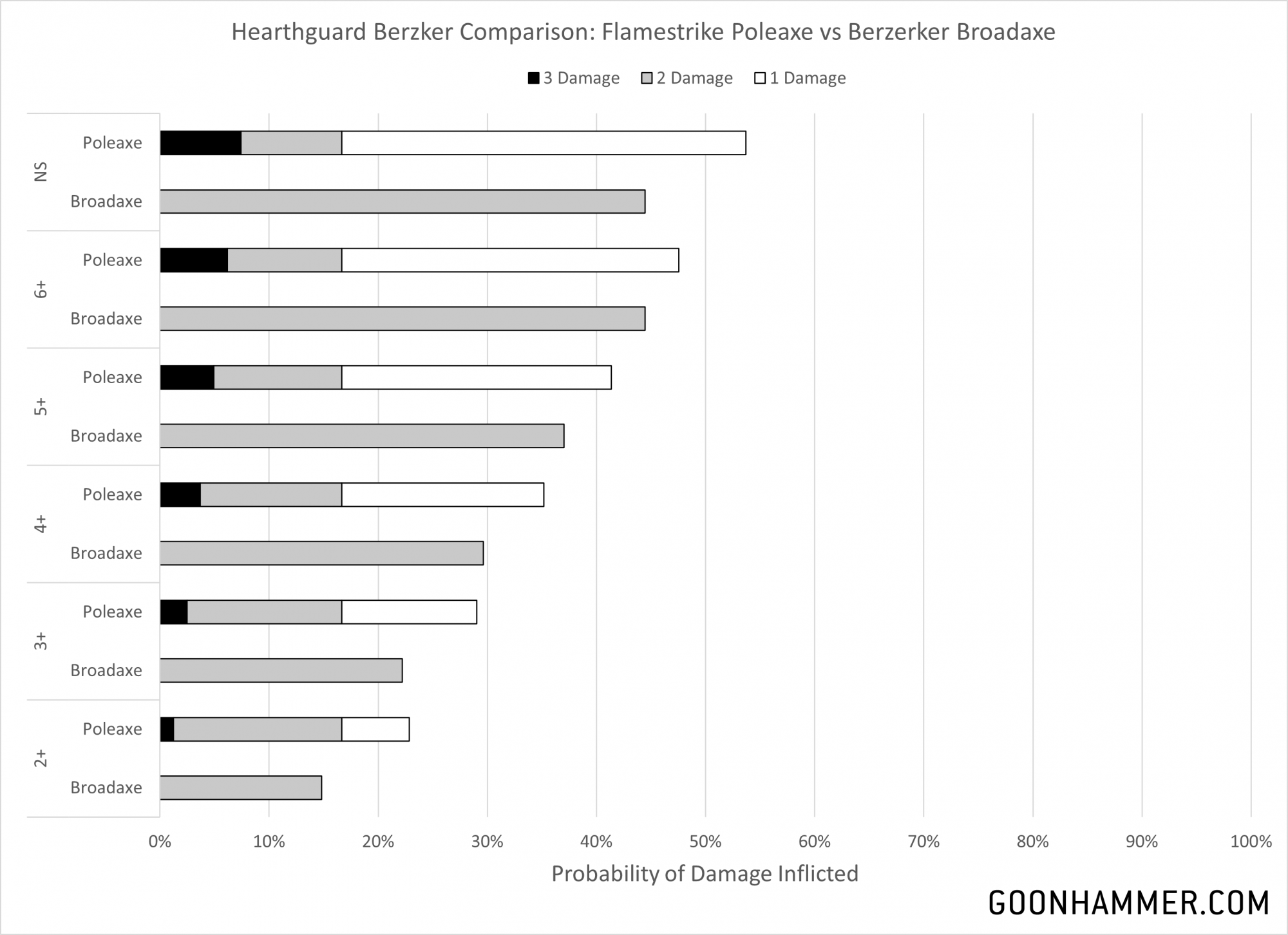
It’s fairly easy to get a bonus to hit through options such as the All-out Attack command ability or the Rune of Fury, so it’s worth examining how that affects results. The bonus to hit provides a significant benefit to the broadaxe, making it the superior choice against every save profile except a 2+. There the poleaxe’s bonus mortal wounds still give it a slight edge, but not by much. In other words the bonus helps the broadaxe more than the poleaxe.

The Rune of Awakened Steel improves the Rend characteristic of melee weapons by 1. As with this hit bonus this provides an advantage to the broadaxe, allowing it to do more average damage than the poleaxe against everything but a 2+ save. This is because the broadaxe’s damage profile is entirely dependent on the regular attack sequence.
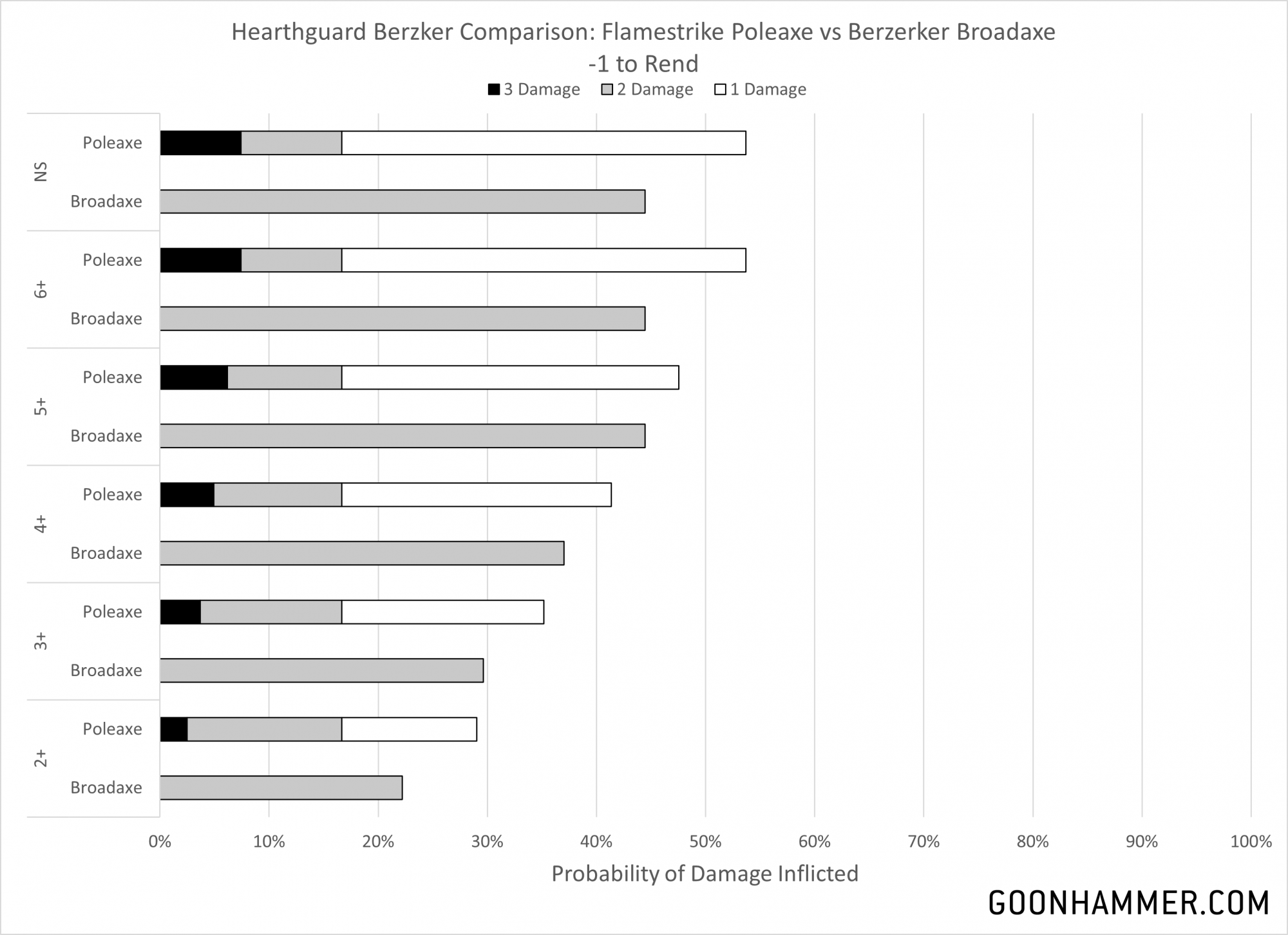
Finally we have the Rune of Searing Heat which inflicts one mortal wound on an unmodified wound roll of 6. The additional mortal wound provides both profiles with an increased chance to inflict some damage, and a very minor chance on the part of the poleaxe to inflict 4 damage. The relative performance of the weapons is unchanged. Taking into account the 3+ to hit means that the bonus only occurs in one in every 10 attacks so it’s not surprising that the impact is so little.
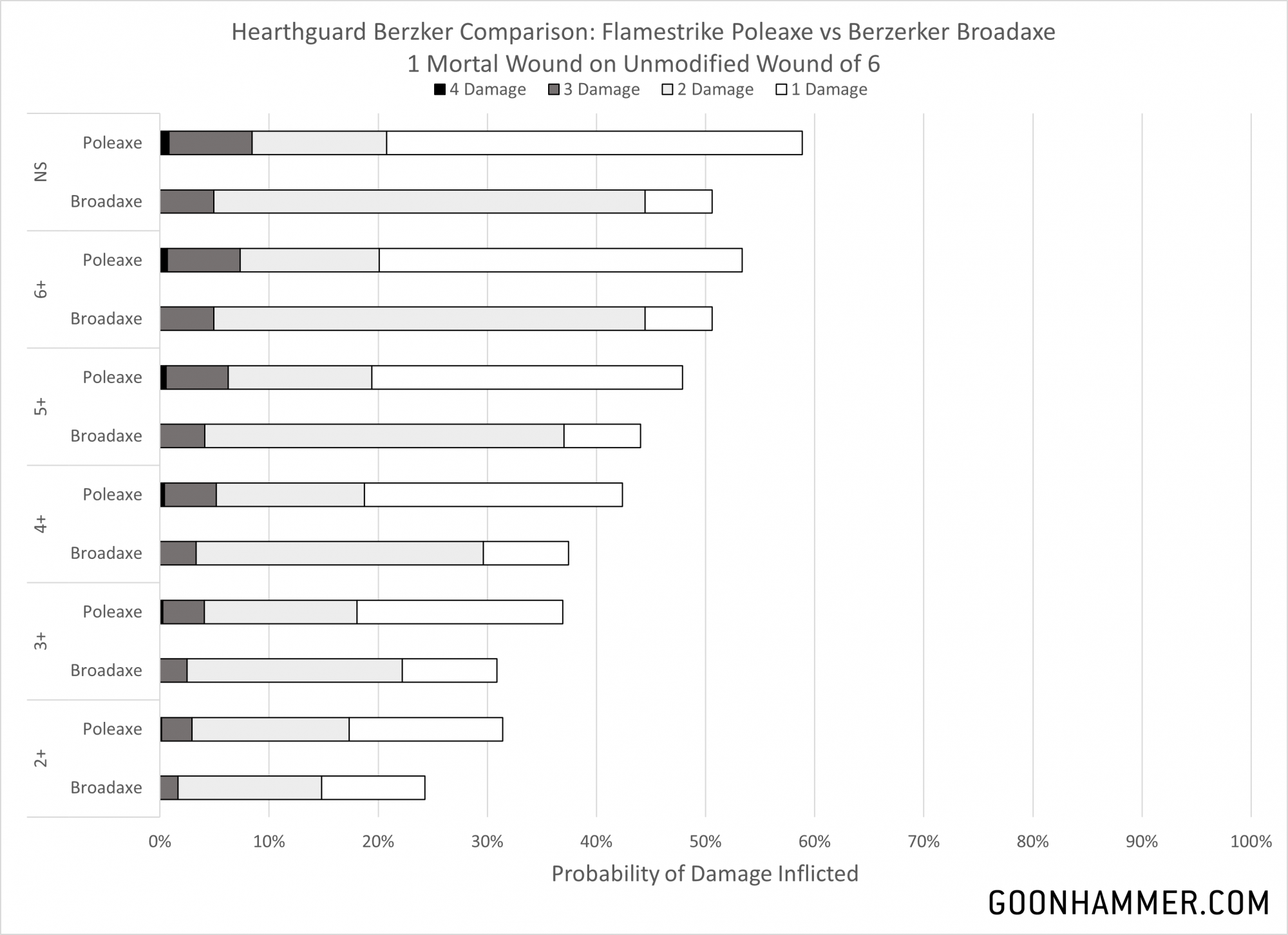

Choppy > Burny
Overall it seems that the berzerker broadaxes are a superior choice to the flamestrike poleaxes. Against all but the most heavily armored threats the broadaxe averages more damage, and the distribution of damage varies less than the poleaxe. The outcome may be different against units with ward saves, and you are welcome to run any calculations you want using the AnyDice program I put together. Incidentally if you happen to like AnyDice please consider giving them a donation. I find it to be an invaluable tool and it’s free to use.
Thanks for reading! If you have any questions or comments feel free to drop us a note in the Comments below or email us at contact@goonhammer.com.
